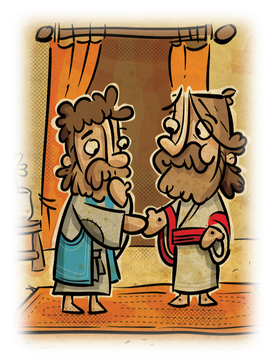 Introduction One day in a classroom a teacher was teaching a lesson and she had a conversation with one of her students and it went like this… TEACHER: Do you see the trees outside? STUDENT: Yes. TEACHER: Do you see the grass outside? STUDENT: Yes. As a class they went outside TEACHER: Look up and see if you can see the sky. STUDENT: Yes, I see the sky. TEACHER: Do you see God? STUDENT: No. TEACHER: So if we can't see God then he must not be there. He simply doesn't exist. A little girl then speaks up and wants to ask the boy some questions. The teacher agreed and the little girl questioned the boy. LITTLE GIRL: Do you see the trees outside? STUDENT: Yes. LITTLE GIRL: Do you see the grass outside? STUDENT: Yessssss (getting tired of the questions this time). LITTLE GIRL: Do you see the sky? STUDENT: Yessssss. LITTLE GIRL: Do you see the teacher? STUDENT: Yes LITTLE GIRL: Do you see the teacher's brain? STUDENT: No. LITTLE GIRL: Then according to our teacher’s logic she must not have one! This joke may make you laugh, but the logic behind it is not so humorous. There are certainly people who think this way when it comes to belief in God. They believe since God is not tangible or visible then he cannot exist. As the story the story suggests this is not very good reasoning. Now, my point for today is not to “prove” the existence of God. Instead, we will go a different route as we will look at faith and specifically at a man who had a very close relationship with Jesus; he was one of the twelve Disciples and his faith was shaken as he encountered the risen Christ and this forever changed his understanding of what faith is and who Jesus is.. Thomas Thomas was one of the twelve disciples. He is listed in the names of the twelve disciples in all three synoptic Gospels and there are three accounts where he is mentioned in the Gospel of John. He is mentioned as Thomas the twin or Didymus which means twin in Greek. Thomas is known for various characteristics in the Gospel of John.
Can you imagine how Thomas felt after this encounter? His response says it all. I am sure you have (or maybe are currently) had a time in life where you doubted God. Maybe you doubted his existence, maybe you doubted that he was going to come through for you in a certain situation or maybe you just wondered, “Why me Lord? Don’t you care about me?” Here are three observations when we encounter Jesus that may strengthen our faith in times of doubt. So, what can we learn from this ordinary rebel named Thomas?
You may be thinking, “Well, it’s so much easier to trust something that you can see. I can’t see God, so how can I know beyond a shadow of doubt that He is actually there?” Answer, you can’t. That’s why it’s called faith. Can you see air or oxygen you breathe with the naked eye? I can’t, but I know it’s there, I feel the effects of it. We all had faith that when we walked into this building that there would be oxygen to breathe, correct? This is faith! I can’t see God, but I know He is there because I feel the effects of Him in my life and I see the wonder of His creation around me and then I KNOW He is real. Faith is something that cannot be proven otherwise it couldn’t be called faith. In this closing remark to Thomas Jesus is speaking of you and me. We are truly blessed. [i] Carson, D.A. (1991) The Gospel of John p. 659 Grand Rapids, MI: William Eerdmans Publishing Company
0 Comments
Leave a Reply. |
Jeff has been in full-time ministry for thirty years. He currently serves as Executive Director at Anchor House Ministry at SeaPort Manatee in Palmetto, FL and he is a part-time Campus Pastor at West Bradenton Southside in Bradenton, Florida.
Jeff Has authored A Lent Devotional (A Spiritual Journey to Lent) an Advent Devotional (The Advent of Jesus) and a devotional on the book of James (James: Where Faith and Life Meet). All three are available on Amazon. He is married to Carrie and they have four children, Micaiah, Gabe, Simon, and Berea. Preview or purchase Jeff's Books
Archives
July 2024
Categories |

 RSS Feed
RSS Feed